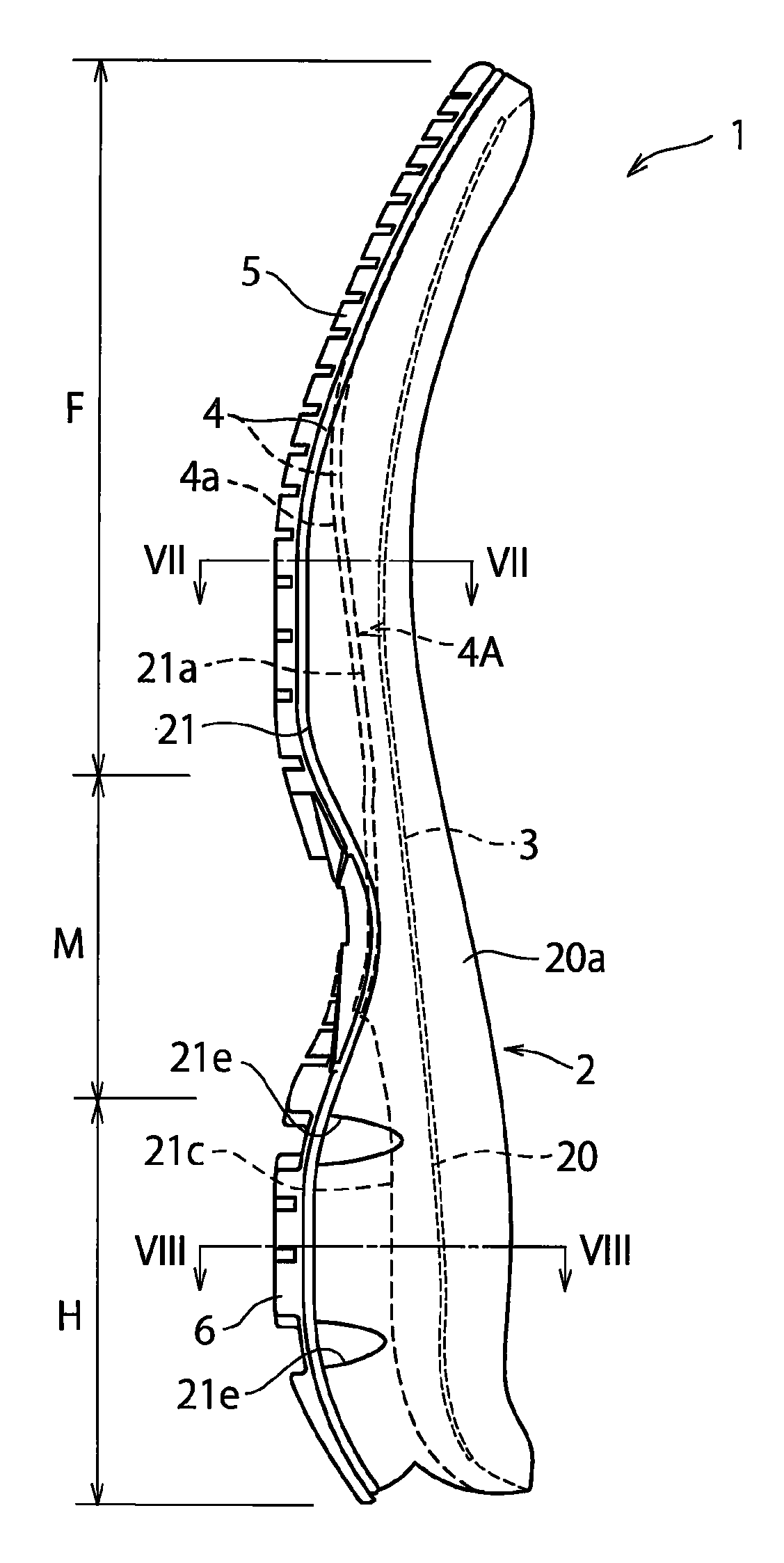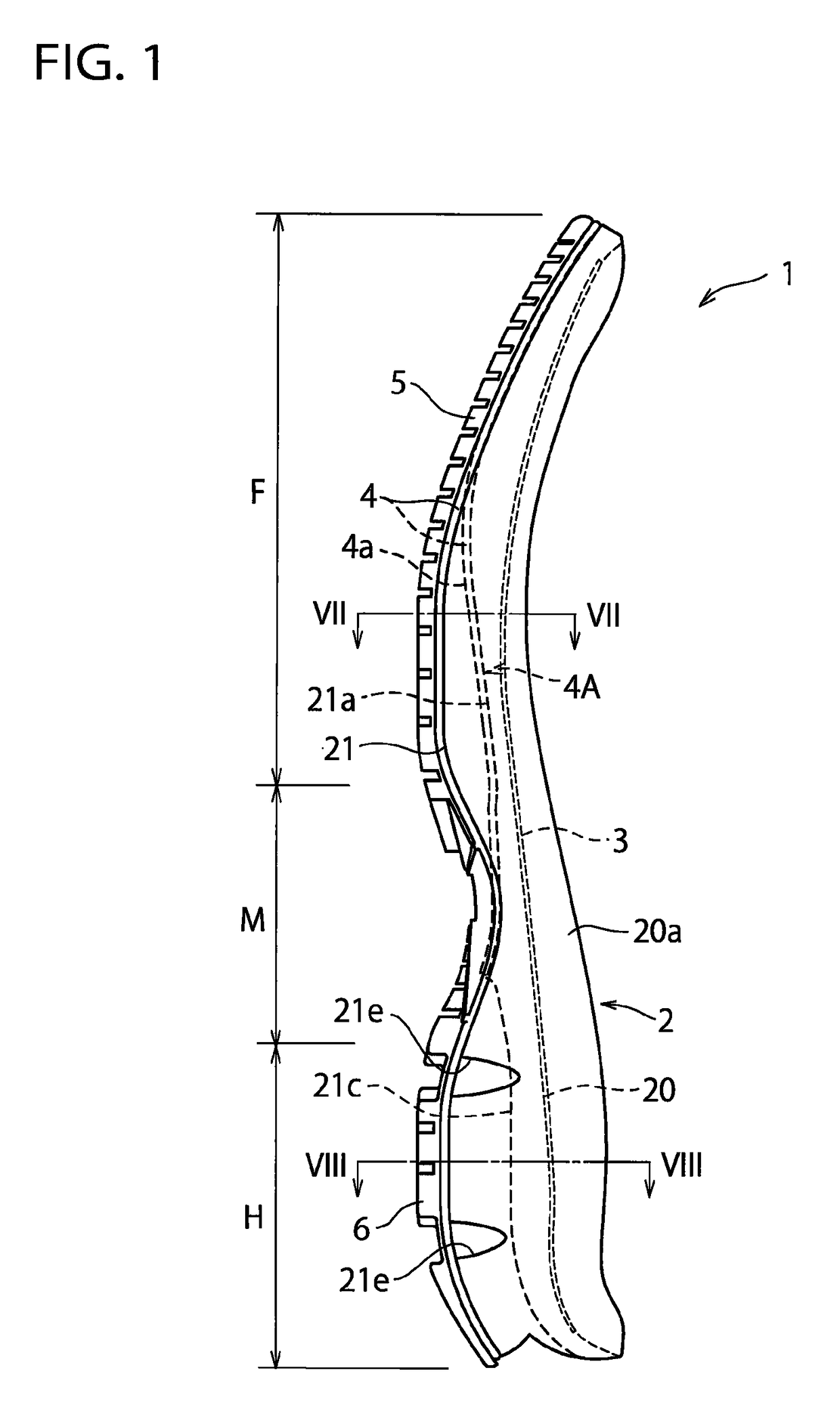Sole structure for a shoe
a technology for shoe soles and soles, applied in the field of shoe sole structures, can solve the problems of increasing the burden on the mp joints, increasing the burden on the knee joints too, and causing injury to the foot joints and the knee joints
- Summary
- Abstract
- Description
- Claims
- Application Information
AI Technical Summary
Benefits of technology
Problems solved by technology
Method used
Image
Examples
first alternative embodiment
[0051]In the above-mentioned embodiment, an example was shown in which the midsole 2 is disposed along the entire length of the shoe extending from the heel region H through the midfoot region M to the forefoot region F of the shoe, but the sole structure 1 of the present invention has also application to a sole structure in which the midsole 2 is disposed at least at the forefoot region F of the shoe.
second alternative embodiment
[0052]In the above-mentioned embodiment, as a preferred embodiment, an example was shown in which the lower plate 4 has the concave portion 4a corresponding to the hollow portion 21a of the bottom surface 21 of the midsole 2, but in the present invention, the midsole 2 has only to include the hollow portion 21a. For example, the present invention can also be applied to an example in which the lower plate 4 has a flat portion on laterally opposite portions of the forefoot region of the lower plate 4 and has a hole, not a concave portion, on the laterally mid-portion.
third alternative embodiment
[0053]In the above-mentioned embodiment, an example was shown in which the front end of the hollow portion 21a formed in the bottom surface 21 of the midsole 2 extends to a position corresponding to the distal end portions of the third metatarsus MB3 and the fourth metatarsus MB4, but the front end of the hollow portion 21a may extend not only to the distal end portions of the third metatarsus MB3 and the fourth metatarsus MB4 but also to the distal end portion of the second metatarsus MB2. Alternatively, the front end of the hollow portion 21a may extend to the position corresponding to the tip end of the toe of the shoe wearer's foot.
PUM
| Property | Measurement | Unit |
|---|---|---|
| height | aaaaa | aaaaa |
| thickness | aaaaa | aaaaa |
| structure | aaaaa | aaaaa |
Abstract
Description
Claims
Application Information
 Login to View More
Login to View More - R&D
- Intellectual Property
- Life Sciences
- Materials
- Tech Scout
- Unparalleled Data Quality
- Higher Quality Content
- 60% Fewer Hallucinations
Browse by: Latest US Patents, China's latest patents, Technical Efficacy Thesaurus, Application Domain, Technology Topic, Popular Technical Reports.
© 2025 PatSnap. All rights reserved.Legal|Privacy policy|Modern Slavery Act Transparency Statement|Sitemap|About US| Contact US: help@patsnap.com



